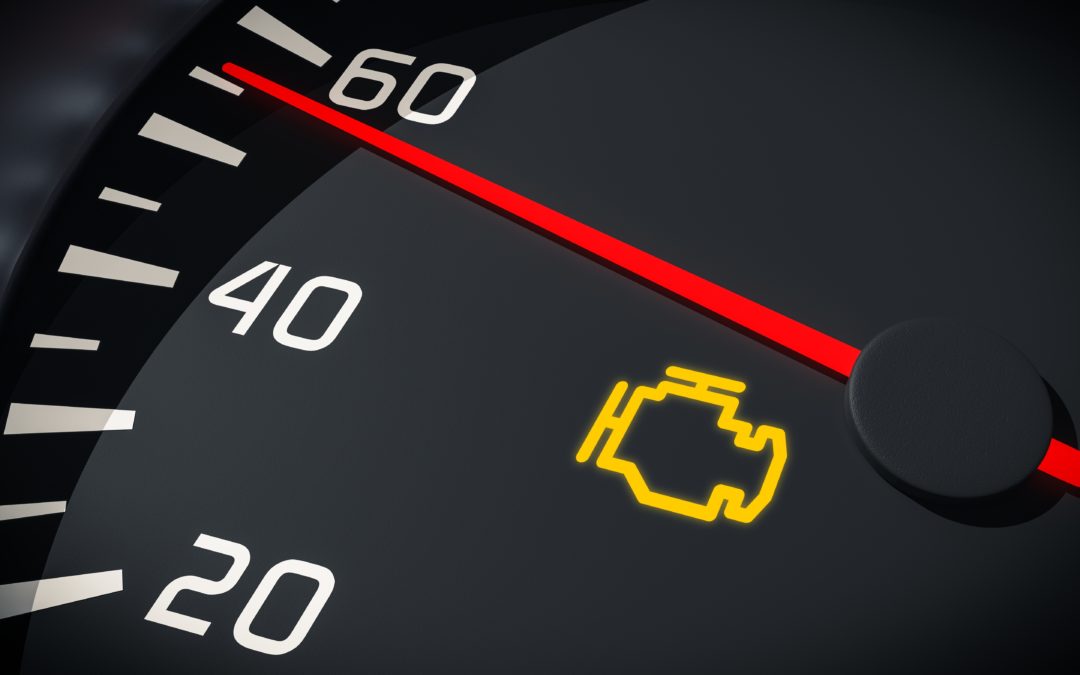A cautious driver is always attentive to the warning signals on the road. But what about the dashboard warning signals? Your vehicle’s dashboard is equipped with multiple warning indicators from low fuel to tire pressure issues. One of those warnings that most drivers do not fully understand is the Check Engine light. In this blog, we examine the common reasons why your Check Engine light may appear on the dashboard and what actions you should take to address this critical warning.
Common Reasons for the Check Engine Warning Light
While we tend to associate the Check Engine light with disaster, it may not always be a major issue. In most cases, the Check Engine light is an early sign of a possible developing problem in your vehicle. Warning lights are typically connected to and controlled by vital components of your vehicle. The Check Engine light is tied to your vehicle’s onboard computer, the Electronic Control Module (ECM).
Any time you see the Check Engine light it is best to address it as quickly as possible. The Check Engine light should never be ignored because it can lead to a bigger problem for your vehicle.
Important: If your Check Engine light is blinking, you should immediately pull over to a safe spot on the side of the road and call for roadside assistance to avoid major and costly damage to your vehicle.
The common reasons your Check Engine light may illuminate are outlined below:
| Issue | How to Address |
|---|---|
| Your fuel tank “gas cap” is loose or malfunctioning | - Turn off the vehicle. - Fully remove your vehicle’s gas cap and securely screw it back on. - Restart your vehicle. The vehicle may need to run for a few minutes to reset the warning light. - Sometimes the gas cap seal may be worn and the cap needs to be replaced to correct the problem. |
| Your spark plugs are worn or you have faulty spark plug wires or ignition coil(s) | - The ignition coils are the component that produce the electricity for the spark plugs to ignite the fuel and create combustion in the engine. - Sometimes the ignition coils or wires connected to the spark plugs are faulty or your spark plugs can become worn or dirty and need to be replaced. |
| Your vehicle’s Oxygen sensor or Mass Airflow sensor is malfunctioning | - The Oxygen sensor keeps track of how much oxygen is burned off in the combustion process. - The Mass Airflow sensor keeps track of how much air enters the engine. - Your engine requires the right mixture of air and fuel to control the combustion process. - If this mixture is improper, then there may be an issue with either one of these sensors. - A faulty Oxygen sensor will cause your vehicle to burn more fuel and left alone may possibly damage the spark plugs or catalytic converter. - A faulty Mass Airflow sensor may cause your vehicle to stall, difficulty in starting, or have a rough idle. |
| Your catalytic converter has failed | - The catalytic converter is part of your vehicle’s exhaust system and is responsible for converting carbon monoxide into carbon dioxide. - A damaged catalytic converter can be very costly to replace, as it contains specific metallic compounds that filter the exhaust. - Regularly scheduled oil changes are one preventative measure to keep your catalytic converter operating effectively. |
There are many other reasons for the Check Engine light in your vehicle. An illuminated Check Engine light should always be checked out by a service professional to avoid complications to your vehicle’s engine. In most cases, you can continue driving but should not delay having it checked out. Typically, a service professional will determine the specific error codes associated with your warning and inspect your vehicle for problems to isolate and confirm the cause.
If your Check Engine light has appeared, contact us or drop by Campus Repair to schedule an appointment. We will do a full inspection of your vehicle and provide you with recommendations for any repairs.

